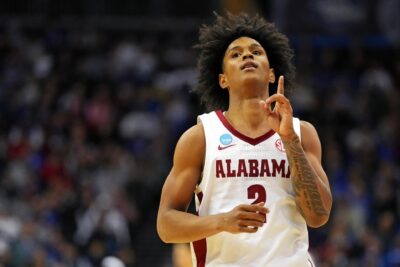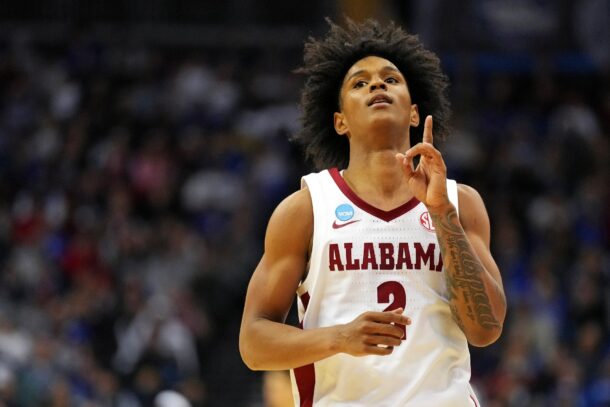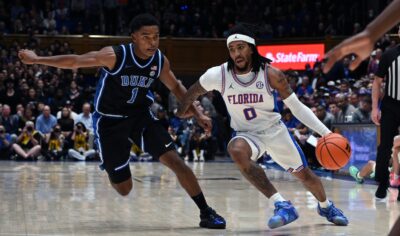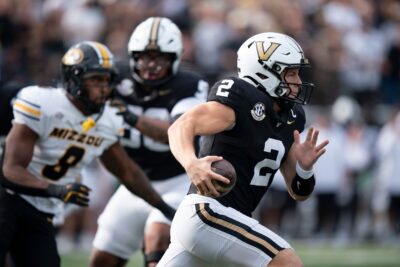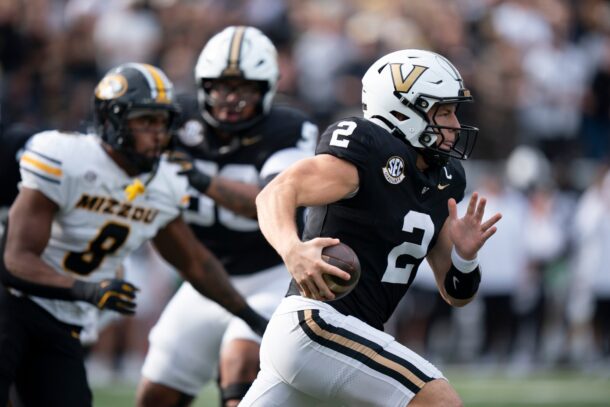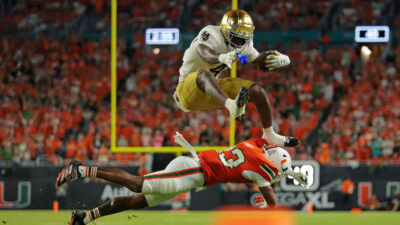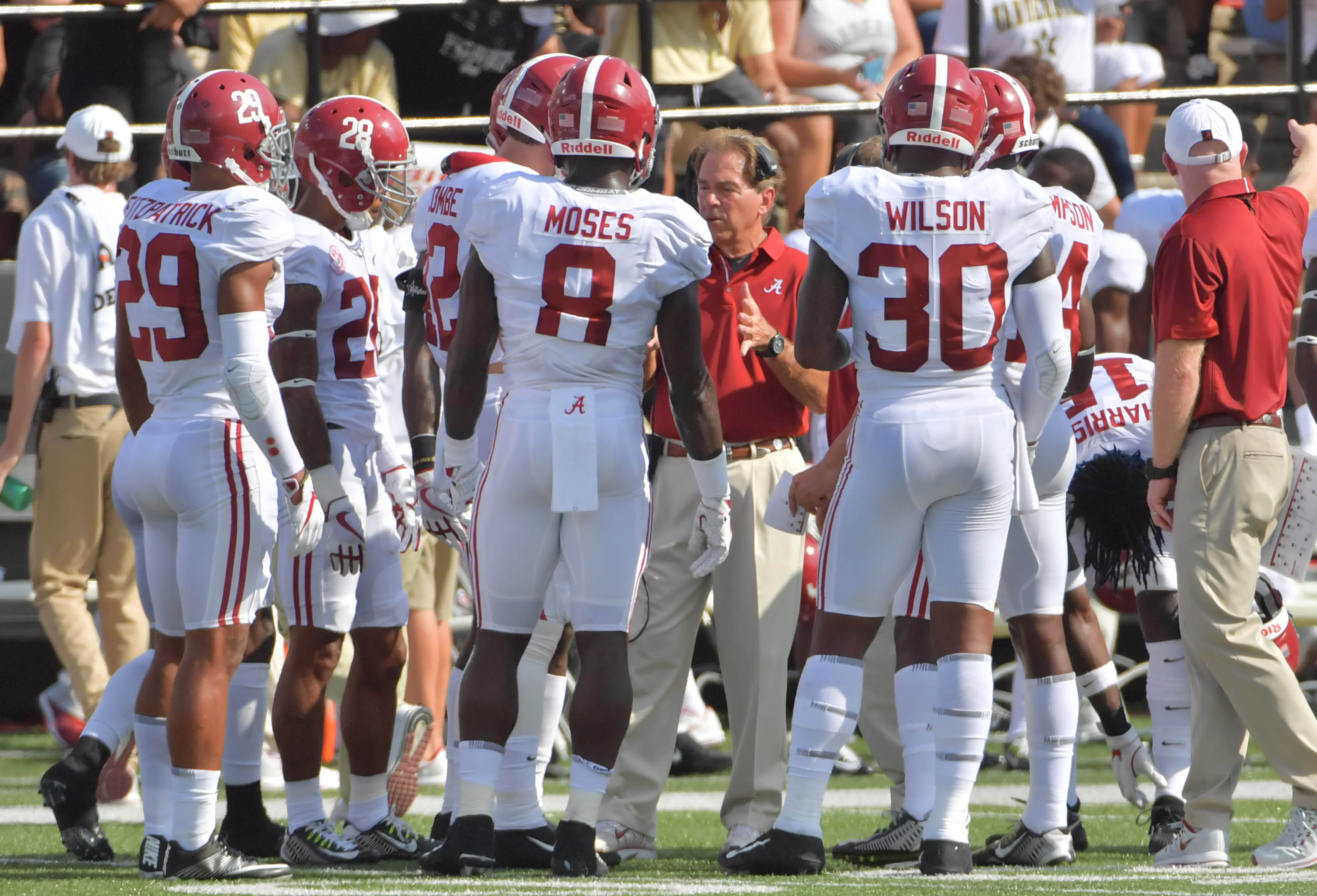
This decade has produced some phenomenal Iron Bowls. The 2010 “Camback” between a No. 2-ranked Auburn and No. 11 Alabama was one for the ages and led to the Harvey Updike tree poisoning incident. The 2013 “kick-six” game was another insta-classic and again led Auburn to the SEC title and the national championship game. The 2014 game was another high-powered contest which Alabama won 55-44 thanks to a 21-point fourth quarter. The Crimson Tide advanced to the first College Football Playoff, where they went down against Ohio State.
This year’s matchup will feature No. 1 Alabama at No. 6 Auburn with the winner moving on to the SEC title game against Georgia. There are CFP stakes on the line as well. Alabama is only favored by four points and Auburn poses enough of a challenge that the Tide’s status as the favorite going on the road in this contest is suspect.
Challenge No. 1: Auburn power vs Alabama’s interior D
Really, only two teams in the SEC have presented any kind of challenge to Alabama’s rule in this decade. The now defunct Hugh Freeze version of the Ole Miss Rebels really tested Alabama’s commitment to fielding lots of thick, run-stuffing defenders with their tempo and spread tactics. The other is Gus Malzahn’s Auburn Tigers, who have also used the spread but for the purpose of making Alabama’s thick, run-stuffing defenders cover ground before trying to out-muscle Auburn in the trenches.
The dynamics of the 2017 Iron Bowl are going to be very different though, in part because Alabama is not the same kind of defense it has been in previous seasons.

The linebacker tandem of Rashaan Evans and Dylan Moses that Alabama is bringing into the 2017 Iron Bowl is unlike any other in the Nick Saban era. To begin with, it’s a much, much younger group. For years Alabama has groomed their young linebackers on special teams as freshman, as backups as sophomores, then as starters in their junior and senior seasons.
They were on track to do exactly that with Shaun Dion Hamilton and Evans this season but Hamilton hasn’t been able to stay healthy since going down in the 2016 SEC title game and backup junior Keith Holcombe had to be pulled against Mississippi State because, frankly, he’s too stiff to play linebacker against today’s spread offenses.
This tandem is also much faster and more lithe than previous inside-linebacker pairings for the Tide. The Alabama defense is designed to set hard edges and funnel the ball inside to stout tacklers but both Evans and Moses are long, fast, and are at their best chasing down ballcarriers. Evans has been something of a outside linebacker-hybrid for Alabama over the years and is second on their team this season in sacks with five.
This all raises the inevitable question: What happens when Auburn looks to confuse young Moses with option concepts? What happens when the Tigers come right at these two speedsters with downhill runs? Moses is a phenomenal athlete and probably the next big thing at Alabama but the Tide never intended to rely on him so heavily as a freshman and they haven’t been dominating the SEC West while relying on freshman linebackers. Nor are they accustomed to lacking a short, powerful inside backer who can stonewall the momentum of a guard like Auburn’s Braden Smith or a fullback like Chandler Cox.
Challenge No. 2: Alabama’s pass defense
The Tide haven’t shown too many weak spots on defense this season, against either the run game or the passing game. However, they’ve also relied pretty extensively on safeties Hootie Jones, Ronnie Harrison and Minkah Fitzpatrick to make tackles and clean things up if their line or linebackers don’t make stops.
It’s virtually a given that Auburn is going to catch Alabama’s linebackers out of position in this Iron Bowl and the safeties will have to make stops. It’s also a given that Alabama will look to involve its safeties to prevent Tigers running back Kerryon Johnson from having a big day. That means one of the key areas in this game might be whether Alabama’s DBs can hold up to Auburn’s passing attack, particularly the elements attached to the run game.
First there are the RPOs (run/pass options) which will be designed to hold Alabama DBs with the threat of perimeter throws, isolating Evans and Moses against the Tigers line:

On this play Auburn quarterback Jarrett Stidham would read nickel Fitzpatrick and throw the bubble screen if Fitzpatrick crashes to stop the power run. Alabama could drop down free safety Harrison (F here) but defending this play would still require that the linebackers recognize things quickly and beat blocks by right tackle Austin Golson and pulling guard Marquell Harrell.
Perhaps even more concerning than Auburn’s various screens is deep play-action passing. Here’s a combination they drew up to attack Mississippi State when the Bulldogs started getting nosy with their safeties against the run game:

Stidham has the arm to push the ball deep down the field and Auburn has guys that can run. Concepts like this can hold the linebackers and isolate receivers deep against the safeties.
There’s going to be a lot on the Alabama safeties’ plate in this game, more than usual, and they might have less help from the defensive line than usual because of Auburn’s really strong offensive line, which is getting healthy and cohesive at the perfect time.
Challenge No. 3: Jalen Hurts
The sophomore quarterback has had a solid season with a 14-1 TD to INT ratio, 9.14 yards per attempt, 686 rushing yards and eight rushing TDs. His role in the offense this year has been somewhat diminished from his true freshman season of 2016. For the most part Hurts just hands off to Alabama’s loaded running back corps running behind their brilliant line or drops back with a progression that tends to go, “First read? Second … eh, time to run!”
Jalen Hurts is averaging 9.1 yards per pass attempt in 2017, well ahead of 2016 (7.3) but he is doing it on far fewer attempts, 18.3 per game this season to 25.5 in 2016.
Defenses which stop Alabama’s run game without leaving Calvin Ridley (858 receiving yards) wide open or letting Hurts roll out of the pocket — admittedly a challenging list of tasks — can leave Alabama’s offense without answers. The Tide have been held under 30 points in regulation on three occasions without facing a defense on the same level as the Auburn Tigers, which surely concerns Saban and his coaching staff.
The Tigers base defense is the nickel; they play a lot of man coverage on the perimeter, freeing up their safeties to help stop the run or rob the middle of the field. They’ll blitz at times but often just rely on pass-rushing end Jeff Holland to lead a four-man rush. The Tigers D is designed to handle offenses like Alabama’s preferred 11 personnel sets (one TE, one RB) and they’ll match up tight on routes and shade help toward Ridley wherever the Tide put him.
For instance, on this route combo Alabama used to try to get Ridley open on the weak side against Mississippi State:

The Tigers will have their safeties help on any in-breaking routes downfield, trust that their their linebackers will cover up underneath and their line will keep Hurts contained. Because Hurts, like every other Saban quarterback, is hard-wired to avoid taking risks downfield, it’s going to be difficult for Alabama to push the ball vertically unless their wide receivers just run past the Tigers down the sidelines.
Auburn is sturdier up the middle this season than Alabama, the Tigers have fewer holes and they can pass downfield more proficiently. All that adds up to what will probably be the most challenging Iron Bowl for Alabama since they faced Cam Newton.
Ian Boyd is a college football analyst who studies the strategies and tactics across the game. Follow or contact Ian on twitter @Ian_A_Boyd.


